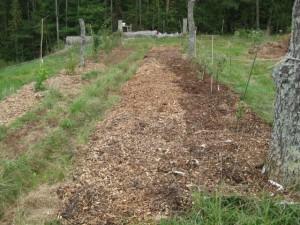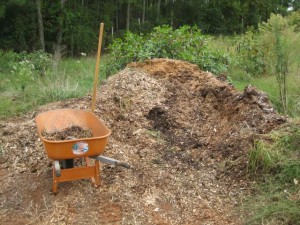There is something about us amateurs that either through haste, ignorance or a desire to perfect, we usually take too long to complete tasks. An example of haste is not setting up carefully before painting and then afterwards spending extra time removing the splash paint from borders or wooden floors or carpet. Our desire to perfect often compels us to give extra effort to behind the scene details which the pro bypasses.
Not that the pros get it right all the time – when I purchased the log cabin I decided to have the exterior professionally painted since some of the siding is more than 40 ft from the ground and, as I work alone, I didn’t want a fall with no one around. The west facing sides of the cabin are exposed to the sun and had black mold. The painters pressure washed with chlorine and then painted. I questioned whether the surface shouldn’t be scraped clean before painting and they assured me the chlorine and pressure wash had killed the mold and the surface was good. I painted the barn and I similarly applied chlorine (and in the process spotted and destroyed a perfectly good shirt), but went a step further and, with a large scrubbing brush, physically removed the mold from the wood surface before painting with a similar type but cheaper paint. Fast forward 3 years – every year the pros have had to “touch up” the sun facing areas where the paint flaked off. Since I have a 5 year guarantee the cost to me for their annual visits has been limited to the cost of a pressure wash. And my paint job with the cheaper paint – no sign of flaking at all.
But it is always gratifying to find a legitimate short cut. I hope the shortcut I am about to describe will prove, over the next year to be a legitimate short cut.

I have two rows of berry plants 12 ft apart and each 66 ft long. The 12 ft separation consists of a 4ft border, a 2 ft contour ditch and a 6 ft border. Both borders are populated with thick local grass interspersed with bermuda grass. I want to transplant my strawberry plants (Earliglo – early season) which seem to thrive in local conditions, produce medium size very sweet strawberries and spread aggressively, to the 6 ft wide 65 ft long border area. So how to prepare the area for planting the strawberries. I decided to spread horse manure 2 inches deep along the area, then cover the grass and manure with thick builders’ paper (purchased 140 ft, 3ft wide for approx $11) and then cover it all with mulch. My hope is that in 6-8 weeks time the grass will have died from lack of sunlight, the manure will accelerate the decomposition of the grass, and the mixture of manure, dead grass and topsoil will provide a healthy welcome for the transplanted strawberries. The mulch should enable the strawberries to thrive without weed competition. I would not have attempted this shortcut earlier in the year when the grass grows strongly but now, in the second half of September, with shortening daylight and with even the poson ivy faltering, it seems a reasonable bet. The long way round would have been to remove the grass but to do this I would have had to remove the topsoil as well and then have had to add back compost to provide nutrition. A lot of work even if I had used the bobcat.

Incidentally, talking of manure, there is manure and manure. In the 1800’s before the advent of modern fertilizers, much experimentation was done on different types of manure and how manure should be stored. Books were written on the topic and these are available free for download at www.Gutenberg.org. An interesting conclusion is that the best manure is that stored outside in a heap, second best is manure stored in a heap under cover, and worst is manure spread on the ground outside. See chapter XV of Talks on Manure by Joseph Harris dated 1919. I mention this because there is new management at the horse stables I visit and, instead of piling the manure in a heap and loading my pickup directly, they have have spread it out on the ground and then drive around in their tractor to gather it up and load it. It seems the weight is half what it used to be (in the past I had to adjust the rearview mirror because the weight at the back depressed the truck significantly, now no adjustment is required) and, from my perspective, I am getting half the nutrients I used to get. Though it requires much less effort to offload, the maxim “no gain without pain” is again validated. Maybe I should find a new source of supply!
